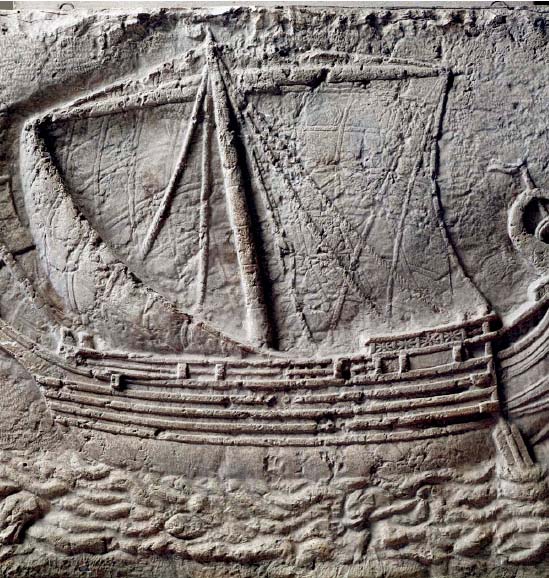
Introduction
Powering the Ancient World Through Trade
Trade has been a key way for people to share culture, goods, and ideas throughout human history. In the ancient world, where communication and travel were limited, trade was even more important. It was through trade that civilizations were able to communicate and learn from and about each other. Traders pushed mankind forward as they exchanged products, currency, and skills. For centuries, the Phoenicians were leaders in cross-cultural trade. They connected the Mediterranean and western Asia through their commercial networks and shaped the civilizations of their time.
Phoenicia was a group of city-states along the eastern coast of the Mediterranean, focused around modern Lebanon and Syria. The cities of Phoenicia were independent but had a cultural identity that linked them together. Phoenicia is believed to have been established in 1500 BCE and lasted until 539 BCE, when Persian Cyrus the Great conquered it.
The Phoenicians were skilled at building ships, as shown by this carving found on the side of a sarcophagus in the ancient city of Sidon.
In the one thousand years Phoenicia was independent, it established trade routes that were extremely influential. The Phoenicians traded by sea and by land. Their routes stretched to Greece, Mesopotamia, and India. These routes were for both export and import, allowing merchants to serve as a connection between the Eastern and Western ancient worlds. The important role they played is clear in the art, writings, and accounts of the many empires and cultures with which they interacted. Phoenicia is mentioned in the works of Homer and the Bible and seen in art in Arabia.
Trade was the basis of Phoenicia’s economy, and it made the Phoenicians very wealthy. Some of Phoenicia’s earliest trade was with Greece, where Phoenicia’s Tyrian purple dye was used by elites in their clothing. Over the course of centuries, Phoenician merchants became the era’s most successful traders. Dye would remain one of their most important exports, along with cedar wood and glass. Phoenicians also traded in silver and tin. They brought these two metals from Spain and other western ports to the East to be mixed with copper to make bronze. They also traded in wine, pottery, food, animals, and papyrus, among other goods.
But it wasn’t just goods that Phoenicians brought through their trade routes. Phoenicia was the first civilization to develop a phonetic alphabet, which they used in their trade business and quickly spread to other parts of the world. The development of a phonetic alphabet was a major step in the evolution of writing, which had been based on hieroglyphic-like symbols rather than individual letters. The Greek alphabet is based on it, meaning that all European alphabets (which are based on the Greek alphabet) are part of the Phoenician trade legacy.
Trade routes served another purpose as well: helping Phoenicia establish colonies. While Greece dominated the northern Mediterranean, Phoenicia controlled the south and set up trade posts along its routes. These eventually grew into colonies, many of which still exist as modern cities, such as Tripoli in Libya, Palermo in Sicily, and Ibiza in Spain. One of the most influential was Carthage, in what is now Tunisia in North Africa. Carthage developed into an empire, fought wars with Greece and Syracuse, and eventually fell to the Roman Empire. It was rebuilt by Julius Caesar and became one of the Roman Empire’s largest cities and an influential center of Christianity.
Although little is known about Phoenician culture outside of trade, its legacy makes clear how important trade routes were to the ancient world. These pathways between cultures were the primary way that civilizations advanced, made peace, learned, and communicated—all at a time when travel was incredibly difficult and dangerous. The Phoenician trade routes were among the most advanced of their time, making the small Phoenician coastal civilization one of the guiding forces of the ancient world. For over one thousand years, Phoenicia was a link between East and West, connecting far-flung empires and cultures to create a business empire.
In this book, we will explore the way Phoenicians established their trade routes, how those routes were used to influence the ancient world, and what legacy Phoenicia left behind. We will discuss the goods, ideas, and people who made Phoenician trade routes some of the most important in their time, the challenges merchants faced, and what became of the trade routes as history went on.
Trade has always been about more than business— it shapes our culture and history. For Phoenicia, that meant playing a role in some of the greatest empires mankind has ever known.